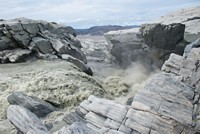Advertisement
Grab your lab coat. Let's get started
Welcome!
Welcome!
Create an account below to get 6 C&EN articles per month, receive newsletters and more - all free.
It seems this is your first time logging in online. Please enter the following information to continue.
As an ACS member you automatically get access to this site. All we need is few more details to create your reading experience.
Not you? Sign in with a different account.
Not you? Sign in with a different account.
ERROR 1
ERROR 1
ERROR 2
ERROR 2
ERROR 2
ERROR 2
ERROR 2
Password and Confirm password must match.
If you have an ACS member number, please enter it here so we can link this account to your membership. (optional)
ERROR 2
ACS values your privacy. By submitting your information, you are gaining access to C&EN and subscribing to our weekly newsletter. We use the information you provide to make your reading experience better, and we will never sell your data to third party members.
Physical Chemistry
Answers To Mantle Oxidation Mystery
Spectroscopic study may solve a long-standing debate over what controls the oxidation states of Earth's mantle
by Elizabeth K. Wilson
August 3, 2009
| A version of this story appeared in
Volume 87, Issue 31
A new study of magma samples from areas where tectonic plates collide may help solve a long-standing debate over what controls the oxidation states of Earth's mantle. These oxidizing properties influence the evolution of Earth's crust and mantle. On the basis of data from magma taken from volcanoes just above the mantle wedge that overlays a sinking tectonic plate, scientists concluded years ago that Earth's mantle is more oxidized in areas where tectonic plates are coming together than where they're spreading apart. In this new study, Katherine A. Kelley of the University of Rhode Island and Elizabeth Cottrell of the Smithsonian Institution, in Washington, D.C., used synchrotron-based X-ray absorption spectroscopy to study a variety of volcanic-glass samples from various tectonic areas. They concluded that the iron oxidation state of lavas increases with the amount of water in the sample (Science 2009, 325, 605). Scientists already knew that water comes from the subducting plate, where one plate slides underneath another. Cottrell tells C&EN that this work now shows that the oxidized signature of the subducting plate, like the water, is also being transferred to the mantle wedge. This implies that the oxidation states of Earth's surface influence those of deep Earth.





Join the conversation
Contact the reporter
Submit a Letter to the Editor for publication
Engage with us on Twitter